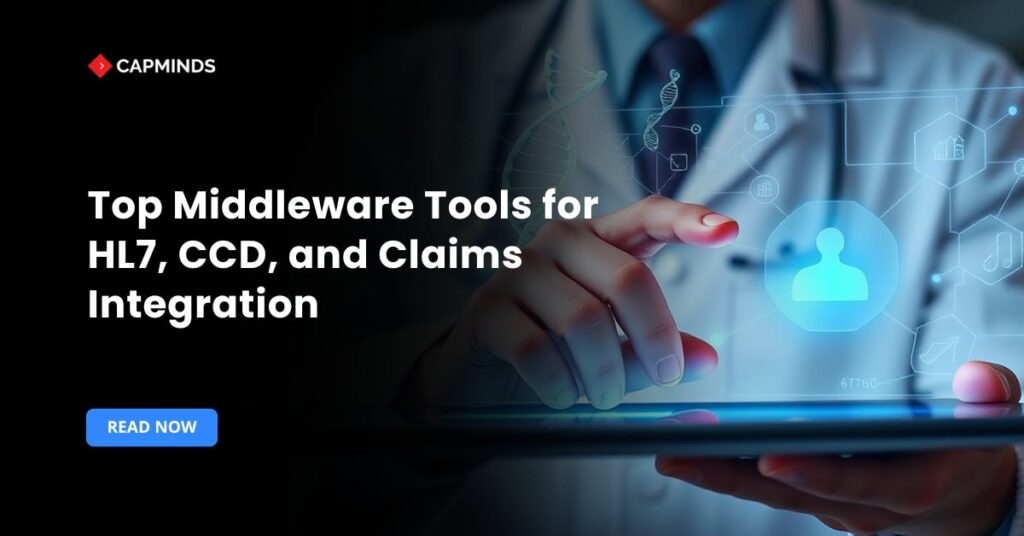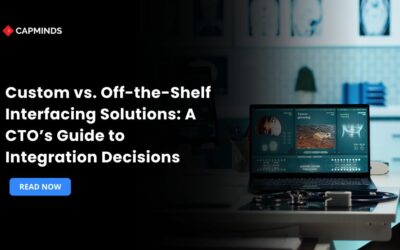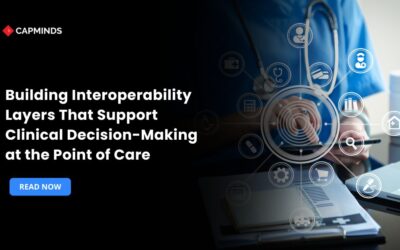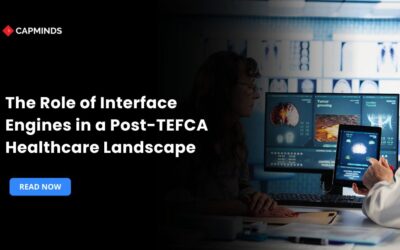Top Middleware Tools for HL7, CCD, and Claims Integration
Healthcare interoperability relies on standards like HL7 for messaging, Continuity of Care Documents (CCD) for patient summaries, and ANSI X12 EDI formats for claims. HL7 is “a set of standards for the exchange, integration, sharing, and retrieval of electronic health information”, and interface engines serve as central hubs that “receive, route, and send HL7 messages to the appropriate healthcare information systems”.
A Continuity of Care Document (CCD) is an HL7-based clinical summary shared when a patient’s care transfers between providers. Because claims use X12 standards, middleware must also handle EDI along with HL7 and CCD.
Modern integration engines typically support all major versions of HL7 (v2.x, v3.x/CDA, and FHIR) and can transform messages between formats (HL7 ↔ CCD, X12, JSON, etc.) as needed.
Effective middleware tools greatly simplify healthcare data exchange. They provide features like powerful data transformation, secure routing, and comprehensive monitoring.
For example, Infor Cloverleaf offers “extensive connectivity” and advanced transformation/routing between EHRs, billing, and claims systems, while emphasizing security and compliance. Orion Rhapsody is known for “advanced data transformation” and flexible routing to handle complex HL7 workflows, along with robust audit/logging features.
Open-source engines like Mirth Connect (NextGen Connect) provide cost-effective mapping and monitoring; Mirth supports multiple formats (HL7, XML, JSON, X12) with a user-friendly interface and strong community support.
Open-Source HL7 Integration Engines
1. Mirth Connect (NextGen Connect)
A popular open-source integration engine, Mirth Connect is praised for its ease of use, versatility, and scalability. It natively handles HL7 (v2.x) messaging and can be extended to support FHIR and X12.
Mirth’s drag-and-drop channel editor and scripting flexibility allow teams to transform, filter, and route data between systems.
- The platform includes robust monitoring and logging to track message flow, and its cost-free license makes it ideal for smaller organizations or budget-conscious projects.
- Strong community and vendor support mean users can find help and plugins, though high-volume use or advanced features may require professional support.
Related: How to Install Mirth Connect on Different Operating Systems
2. HAPI HL7v2
HAPI is a Java-based open-source library and interface engine for HL7 v2 messages. It provides a simple, flexible framework for parsing, validating, and constructing HL7 messages. Organizations can use HAPI to build custom integrations from the ground up; it supports HL7 v2.x standards out of the box.
While HAPI itself is a toolkit (developers typically embed it in custom applications), it is a recognized choice for cost-sensitive projects that require pure open-source HL7 capability.
3. Open-Source FHIR and CDC Engines
Though not HL7 v2-centric, some open tools support newer standards. For example, projects like OpenHIM or HAPI FHIR help manage FHIR-based data exchange.
Many integration platforms now include FHIR connectors as part of their stack. (For CCD specifically, the C-CDA format is based on HL7 v3/CDA; engines that support HL7 v3 can usually handle CCD documents.)
Commercial Integration Engines
1. Orion Rhapsody Integration Engine
Rhapsody (Orion Health) is a mature, enterprise-grade interface engine. It offers powerful transformation capabilities (mapping between diverse message structures) and flexible routing to ensure data is delivered accurately. Rhapsody prioritizes interoperability, supporting HL7 v2, v3/CDA (including CCD), FHIR, and other formats.
It also includes robust audit trails and monitoring to track each message flow. Rhapsody’s strengths are especially evident in large healthcare networks: it easily handles high data volumes and complex workflows. The trade-off is higher licensing costs and complexity; it typically requires dedicated IT expertise for customization.
Related: Rhapsody vs Mirth vs Cloverleaf: Which Interface Engine Scales Best for Multi-Facility Health Systems?
2. Infor Cloverleaf Integration Suite
Cloverleaf is widely used by hospitals and health systems. It excels at connecting diverse systems, “from EHRs to billing and claims processing systems,” through extensive interfaces.
- Key features include advanced message transformation and routing rules, real-time monitoring of interfaces, and strong built-in security/compliance controls.
- Cloverleaf can scale with an organization as it grows; Infor offers dedicated support to help customers deploy and maintain complex integrations.
- This makes it a robust choice for larger facilities or enterprises with stringent security/regulatory needs.
3. Lyniate Corepoint Integration Engine
Corepoint (now part of Lyniate) is designed for simplicity and fast deployment. According to its maker, Corepoint is “quick, powerful, no-code-required interoperability” and delivers “cost-effective and integrated data exchange for any healthcare system.”.
Built for analysts, Corepoint provides a straightforward interface for creating HL7 (and X12) interfaces without extensive coding.
It offers proactive monitoring dashboards and cloud-ready deployment options. In practice, Corepoint is appreciated by mid-sized hospitals and clinics for its ease-of-use; it lowers the learning curve for building interfaces and includes features like automated alerts.
4. InterSystems Ensemble / IRIS for Health
InterSystems Ensemble (part of the InterSystems IRIS platform) is an all-in-one data platform and integration engine. It combines message routing, transformation, a database, and application services in one package.
- Ensemble supports a wide range of standards (HL7 v2/v3, CCD/CDA, FHIR, X12 EDI, even DICOM).
- Its repository stores all elements of an integration solution, which speeds development and management of interfaces.
- Hospitals use Ensemble to build complex workflows that aggregate and transform data across systems.
- The platform emphasizes high performance and “bullet-proof reliability” in production.
- However, Ensemble/IRIS tends to be an expensive solution best suited for organizations that need a comprehensive data platform alongside interoperability.
5. INTERFACEWARE Iguana
Iguana is a commercial HL7 engine focused on flexibility. It supports all major HL7 versions (v2.x, FHIR) and can handle many data formats, including XML/CCD and X12.
Iguana’s web-based interface lets users filter, parse, and transform messages; for example, it can convert HL7 input into a CCD or X12 claim format.
It supports both real-time and batch processing, making it versatile for different workflows. Iguana is often used by hospitals and labs; its strength lies in customization and support for custom scripting, though it does require some technical skill to operate.
6. MuleSoft Anypoint Platform
MuleSoft provides an enterprise integration platform (API-led connectivity) that is agnostic to healthcare standards. Through Anypoint Connectors, MuleSoft can interface with EHRs, labs, portals, and process HL7 or X12 payloads.
- In healthcare settings, it is used to build API gateways and ESB-style solutions.
- MuleSoft’s strengths are in cloud deployments and API management, with features like fine-grained security, scalability, and reusable API assets.
- However, MuleSoft’s license cost and development model (focused on APIs) may be overkill for smaller providers; it shines in large organizations pursuing a strategic API/integration strategy.
7. Microsoft BizTalk Server (with HL7 Accelerator)
BizTalk Server is a long-standing enterprise integration engine that can handle HL7 via its specialized accelerator. The BizTalk Accelerator for HL7 “allows BizTalk to speak the HL7 language” by providing HL7 schemas, transport adapters (e.g., MLLP), and validation.
Hospitals using Microsoft stacks often leverage BizTalk for both HL7 messaging and for X12 EDI (claims). BizTalk’s development is integrated into Visual Studio, so .NET developers can build integrations using familiar tools.
The main considerations are that BizTalk is a more general-purpose EAI tool (not healthcare-specific), and it requires Microsoft infrastructure and expertise to maintain.
Claims (EDI) and Financial Data Integration
Claims processing in healthcare is typically done through ANSI X12 EDI standards (e.g., 837 claims, 835 payments). Many of the above integration platforms include support for X12 as well as HL7.
- For instance, Mirth Connect can parse and generate X12 transaction sets in addition to HL7.
- InterSystems Ensemble explicitly supports “diverse standards (HL7, FHIR, X12, DICOM)”, meaning it can translate between clinical and billing formats.
- Cloverleaf and Rhapsody similarly handle X12 messages for payers.
- Specialized clearinghouse or API services (such as Change Healthcare or Availity, not covered here) often serve as endpoints for claims; however, an on-premise engine usually handles the translation and routing of claims data to/from those partners.
Buyers should ensure that any chosen middleware can map between claims and clinical domains. Key capabilities include automated EDI validation (to catch HIPAA compliance errors), support for acknowledgments, and connectivity to payer systems.
- A middleware might receive a lab HL7 ORU result and also send a related charges file (837) to a clearinghouse.
- Platforms like MuleSoft and BizTalk often offer add-on modules for EDI translation.
- Smaller organizations sometimes use open-source EDI tools (e.g,. Bots) or combine them with HL7 engines, but major vendors provide enterprise-grade EDI adapters for reliability and compliance.
Choosing the Right Integration Engine
Selecting the best middleware depends on an organization’s size, goals, and IT resources.
- Cost: Open-source engines like Mirth Connect have no licensing fees, which is attractive for smaller clinics or pilot projects. Commercial engines (Cloverleaf, Rhapsody, Ensemble) carry higher upfront costs but include professional support and advanced features.
- Ease of Use: Engines with graphical interfaces (e.g., Corepoint, Iguana) are faster to deploy by analysts without coding. Others (Rhapsody, BizTalk) may require more technical expertise but offer greater power.
- Standards Support: Ensure the engine fully supports required versions of HL7, CCD/CDA, FHIR, and X12. As noted above, modern tools universally cover HL7 v2/v3, but FHIR readiness varies. Many also support SNOMED/LOINC terminology, OAuth2/security, and analytics features.
- Scalability and Performance: For large hospitals or HIEs, high throughput and clustering can be critical; engines like Rhapsody and Ensemble are built for scale.
- Deployment Model: Some buyers prefer cloud/SaaS options (NextGen Connect Enterprise or iNTERFACEWARE’s hosted offering, MuleSoft CloudHub), while others need on-premises control.
Healthcare IT leaders should evaluate tools by running proof-of-concept interfaces with their data. Consulting peers and vendor briefs can help assess which solutions align with organizational needs. As one analysis notes, the choice “ultimately depends on your organization’s specific needs, budget, and the level of expertise available”.
Whether opting for a cost-free open source engine or an enterprise suite, the right middleware will enable seamless interoperability, improving patient care and streamlining operations by ensuring HL7 messages, CCD summaries, and claim transactions flow reliably between systems.
Unlock Seamless Interoperability with CapMinds’ Healthcare Integration Solutions
At CapMinds, we offer comprehensive digital health tech services that ensure seamless interoperability across your healthcare systems.
Our robust solutions help you integrate and streamline workflows, improving patient care and operational efficiency. Leverage our expertise to unlock the full potential of your data exchange.
- HL7 & FHIR Integration: Facilitate real-time data exchange between diverse systems, including EHRs, billing, and claims.
- Health Data Exchange: Secure, standardized data transmission to optimize care coordination and decision-making.
- Healthcare Interoperability: Achieve full integration across systems with compliance to industry standards.
- Clinical & Claims Integration: Simplify patient data transfer with support for HL7, CCD, X12, and other vital formats.
Ready to take your healthcare IT systems to the next level?
Contact CapMinds today and let us provide you with tailored solutions to boost your interoperability capabilities.




